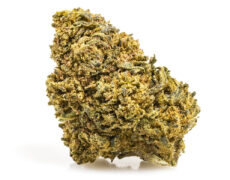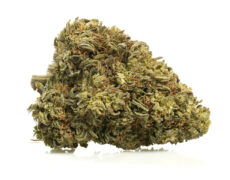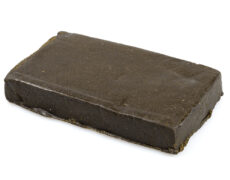Modified on: 11/09/2023
Drying and tanning of cannabis: why is this process so important?
The proper drying of cannabis plants is an essential step in obtaining a high-quality product.
But how exactly does this process take place and what are the considerations to keep in mind?
In this article, we will explore the process of drying cannabis plants, from the importance of doing it slowly and evenly to the key factors to consider in order to obtain an aromatic, high-quality end product, such as legal hash.
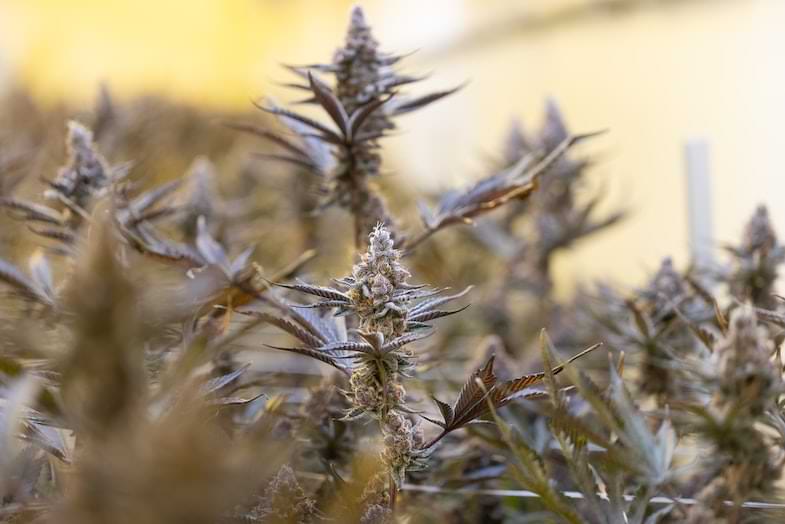

Let’s get to the point: how is cannabis dried?
When cannabis plants are adequately grown, they contain large amounts of liquid, so in practice, when you do the drying, about 75% of the liquid they have evaporates.
For the drying to take place properly, it must be done slowly and evenly, because when the buds are dried too quickly, substances remain trapped inside, which give the final product an unpleasant taste.
These include starch and nitrates, but also chlorophyll and other pigments, which not only spoil the taste pleasure but also compromise the combustion process.
Conversely, when the legal cannabis plant is dried too much, the result is a product that is poor in aromas, scents and flavours, which does not result in good quality weed.
If, on the other hand, the drying process is carried out correctly and at the right time, the pigments deteriorate entirely, and the taste and aroma of the final product can be considered good quality.
Therefore, drying is necessary to allow the marijuana to burn, and doing it correctly is essential to obtain a pleasant, practical, and good quality product.
But how does it work exactly?
The drying process is quite simple, but it needs time to be done properly. Firstly, a dark room must be found. This is due to the fact that light degrades THC and, therefore, explains the importance of drying marijuana in a dark place. This ensures that the potency of the final product is not at any time affected from the outside.
After the cannabis plants have been manicured, they are hung upside down, so that the tops of the plants face downwards. In addition, it should be ensured that there is no contact between the plants. In this way, air can circulate freely between the tops, thus maximising the contact surface and preventing mould.
The temperature of the drying room should be kept constant at around 20 degrees Celsius for the first three days, and then lowered to around 17-18 degrees Celsius. This allows much of the excess water to evaporate quickly, taking with it other compounds contained in the plant matter. The whole process can take ten to twenty days.
As the marijuana slowly continues to dry, the relative humidity should be kept around 50% in the room used for this process. This allows water to evaporate and escape from the marijuana in a moderate, but not excessively fast, time. A hygrometer may come in handy to measure the relative humidity of the room, while a fan, dehumidifier and humidifier may be useful to control it.
Read also: How long do dabs stay in your system?
How to harvest, dry, and tannage cannabis
In addition to maintaining a constant relative humidity, it is important to ensure good ventilation of the room. Continuously providing fresh air reduces the occurrence of mould considerably. It is worth noting that freshly cut marijuana gives off rather intense and smelly aromas, especially during the first few days of drying.
This is why we always recommend taking precautions and avoiding unwanted attention. Ideally, you should find a secluded place to dry your plants away from prying eyes or directly in your grow box, leaving the air filter on.
The latter stratagem is ideal for keeping odours under control, but it has one drawback: the grow box cannot be used for growing, as the hanging plants will have to remain in the dark throughout the drying process.
You will know that your cannabis has dried out when the branches break easily. Simply try bending some of them:
- if the branches break, emitting a ‘crunchy’ sound, then it means that your buds are now dry;
- if they bend, without breaking, then they probably need a few more days.
We realise that this process can be rather tedious, but by no means try to speed it up by using unnecessary devices such as a hot air fan or a microwave oven.
The only thing you will achieve is irreversible damage to the quality of the final product, depriving you of the pleasure of tasting a potentially extraordinary herb.
In fact, you need to understand that it is not just water that evaporates from plants. Chlorophyll, the organic compound used by plants to transform sunlight into energy, must also evaporate, but its process takes longer. When CBD cannabis is dried too quickly, chlorophyll does not have time to be synthesised properly, remaining in the plant parts of the marijuana. Chlorophyll contains magnesium and if this is not completely removed from the weed, a much stronger and more bitter smoke will result.
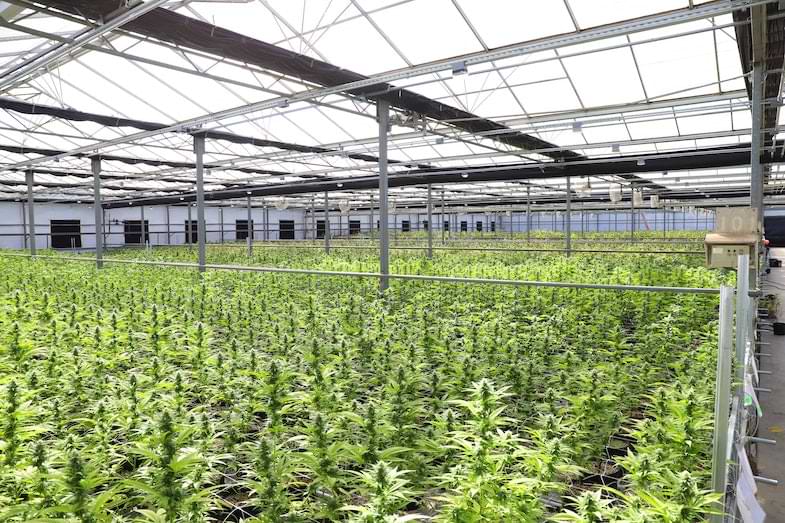

Tanning the cannabis buds
When the buds have completed their drying phase, it is time to move on to the next step: tanning.
It can be regarded as a true art form, rather complex to perform, but with practice and experience you will understand its importance and its close connection to the overall quality of the herb. Carrying out proper tanning allows a herb to express the best of itself, especially in terms of aroma and effect.
This delicate process called tanning has two main objectives.
Firstly, it allows sufficient time for the bacteria to degrade any chlorophyll residue present in the plant parts. As we mentioned earlier, chlorophyll contains magnesium, which is responsible for making the smoke of a chlorophyll-rich herb bitter. Instead, by allowing the bacteria the necessary time and the appropriate environment in which to synthesise this pigment, one is assured of obtaining an extraordinary product in terms of taste and feel.
Secondly, the tanning of the herb serves to define the precise percentage of moisture required for proper storage. It is obvious that the drier the cannabis is, the faster and easier it will burn.
However, the drying point of the buds must be kept under control, because an excessively dry bud becomes brittle, pulverises and loses its original flavour. An experienced grower recognises the importance of this and will know how to determine the right time to switch the buds from drying to tanning.
Only through proper tanning will a superior quality herb be obtained.
But let’s get straight to the point: how to tan cannabis CBD flowers?
The previously dried flowers are placed inside airtight containers that must be filled to 2/3 of their capacity, without being pressed, and completely in the dark.
This will provide enough air to keep the micro-organisms responsible for continuing the desired biochemical processes alive and prevent light from degrading the cannabinoids.
If, on the other hand, the containers are overfilled or the flowers pressed, there will be an excessively high level of humidity with the consequent risk of mould growth (almost a certainty).
For the first 15-20 days, the containers must be opened every day, several times a day, for a couple of minutes to provide new oxygen. When doing so, the tops should be gently turned and stirred in order to visually (and olfactorily) check for mould.
The humidity in the containers should always be between 55% and 62%.
After the first few days, which are the most delicate, the controls can be thinned out over time.
Read also: The best foods to eat when high? Here’s the answer
Conclusions
In conclusion, the drying process plays a crucial role in ensuring the quality and potency of cannabis. Proper drying allows for the evaporation of excess liquid, which enhances the taste and combustion process while preventing the retention of unwanted substances. The careful management of temperature and humidity levels is essential to achieve optimal results.
By drying cannabis plants slowly and evenly in a dark environment, the degradation of THC can be minimized, preserving the potency of the final product. Hanging the plants upside down and ensuring adequate airflow between the buds helps prevent mold and maximize drying efficiency.
Maintaining a consistent temperature of around 20 degrees Celsius initially, followed by a gradual decrease, facilitates the evaporation of excess water and compounds from the plant matter. The overall drying process typically takes between ten to twenty days.
Monitoring and controlling the relative humidity, aiming for around 50%, allows for moderate but effective water evaporation without risking over-drying. Tools such as a hygrometer, fan, dehumidifier, and humidifier can assist in maintaining the desired humidity levels.
In conclusion, proper drying techniques are essential to achieve a pleasant, practical, and high-quality cannabis product. By following these guidelines, one can ensure that the final product offers optimal taste, aroma, and potency for an enjoyable experience.
💡Takeaways on drying the cannabis plant
- The proper drying of cannabis plants is essential to obtain a good quality end product in terms of taste and aroma.
- During drying, approximately 75% of the liquid in cannabis plants evaporates, contributing to a reduction in weight and concentration of the desired compounds.
- Drying too quickly can retain unwanted substances such as starches, nitrates and chlorophyll within the plant, which negatively affect the flavour and combustion of the final product.
- On the other hand, over-drying can reduce the aromas, smells and flavours of the final product.
- During the drying process, it is important to maintain a constant temperature between 20 and 18 degrees Celsius and a relative humidity of 50% to allow excess water to evaporate gradually without compromising the quality of the product.
- It is advisable to dry the plants by hanging them upside down, in a dark environment, to avoid light-induced degradation of the THC.
- Air circulation between the tops of the plants is important to promote even evaporation and prevent mould formation.
- During the drying process, the relative humidity can be monitored with a hygrometer and adjusted using fans, dehumidifiers or humidifiers.
- It is important to ensure good ventilation of the room in addition to maintaining a constant relative humidity. Continuously providing fresh air greatly reduces the formation of mould.
- To find out if the cannabis is completely dried out, you can try gently bending some branches. If the branches break by making a ‘crunchy’ sound, then this means that the buds are now dry. If they bend without breaking, they probably need a few more days.
- It is important to avoid accelerating the drying process by using unsuitable devices such as hot air fans or microwave ovens. These devices can irreversibly damage the quality of the final product and deprive you of the pleasure of enjoying a potentially extraordinary herb.
- During the drying process, it is not only water that evaporates from the plants, but also chlorophyll, the organic compound used by plants to convert sunlight into energy. Chlorophyll takes longer to evaporate properly. If cannabis is dried too quickly, chlorophyll does not have time to be synthesised properly and remains in the plant parts of the marijuana.
- Since freshly cut marijuana emits strong, pungent odours, it is advisable to take precautions to avoid unwanted attention. Ideally find a secluded place to dry the plants, away from prying eyes, or use a grow box with the air filter on. This will help you control odours, but remember that during the drying process the plants will have to remain in the dark, preventing you from using the grow box for cultivation.
FAQ about cannabis drying
Why is it important to dry cannabis plants slowly and evenly?
It is important to dry cannabis plants slowly and evenly because this prevents substances from getting trapped inside the buds, thus preventing an unpleasant taste. It also allows the pigments to deteriorate, resulting in a good quality end product.
Why should marijuana be dried in a dark room?
Marijuana should be dried in a dark room to avoid degradation of THC due to exposure to light. Drying in a dark place helps maintain the potency of the final product.
What is the ideal temperature and humidity for drying marijuana?
The temperature of the drying room should be about 20 degrees Celsius for the first three days, then drop to about 17-18 degrees Celsius. The relative humidity should be kept around 50% to allow water to evaporate from the marijuana at a moderate rate.


